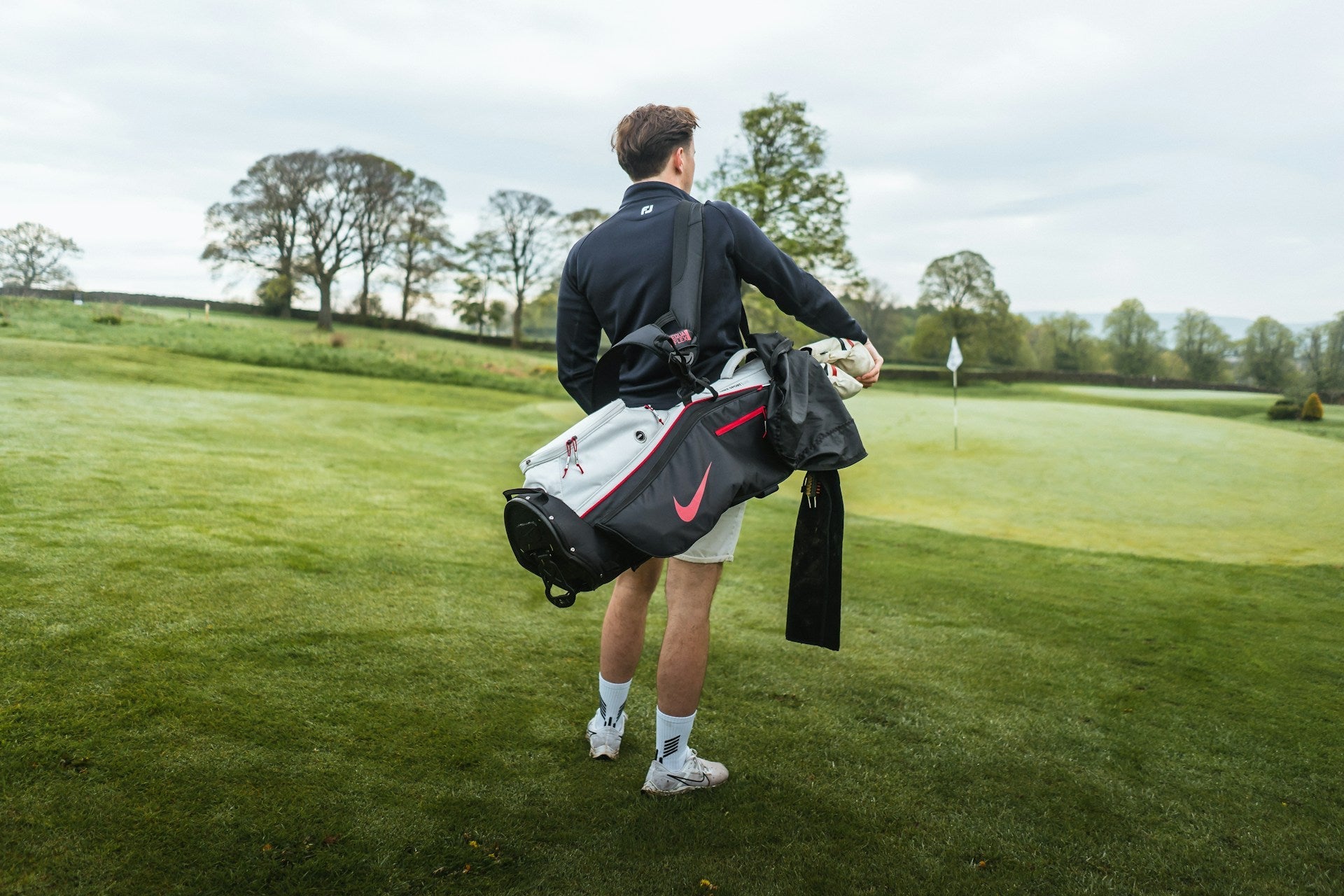Efficiently setting up your golf bag can significantly enhance your game efficiency and organization. A well-organized golf bag offers not only ease of access during your round but also protects your clubs and reduces distractions on the course. Discover the key benefits of mastering your golf bag setup and how it can streamline your golfing experience.
Types of Golf Bags
Selecting the right golf bag is crucial. Golf bags come in different styles to suit various needs:
-
Stand Bags: Lightweight and versatile, stand bags are perfect for golfers who enjoy walking the course. Equipped with built-in legs, they provide easy access to your clubs when set down.
-
Cart Bags: Cart bags are designed with golfers in mind, optimized for use on a golf cart. They offer ample storage, making access to golf clubs and accessories from a cart convenient.
-
Tour Bags: Often used by professionals, tour bags are the largest option, providing extensive storage space for golf clubs and accessories, albeit being heavier and more luxurious.
Key Features of a Golf Bag
Understanding the features enhances organization:
-
Divider Systems: Whether a simple 3-way or a comprehensive 15-way divider, dividers categorize clubs and prevent them from clashing.
-
Pockets: From golf balls to tees and apparel, pockets are tailored for specific accessories, enhancing your bag's functionality.
-
Strap System: Adjustable, padded straps ensure comfort, distributing weight evenly, which is crucial for those who carry their bags.
Setting Up Your Golf Bag
Weight Distribution & Club Arrangement
A balanced weight distribution is essential, especially for players using carry bags. Placing heavier clubs like woods and drivers at the top helps keep the bag balanced whether carried or secured on a cart.
Suggested Club Groupings:
-
Woods and Drivers: Position these in the top/back compartments for accessibility while preventing them from entangling with shorter clubs.
-
Irons: Arrange these in the middle sections, from longest to shortest. This order maintains easy access and prevents wear from clubs knocking together.
-
Wedges and Putters: Best placed at the front for quick access during crucial short-game moments.
Read more at The Essential Guide to Golf Club and Golf Bag Weights
Organizing Accessories and Equipment
Optimizing golf bag storage ensures you're prepared for every situation on the course.
-
Golf Balls: Store them in a front or side pocket for swift retrieval. Secure closure is vital to avoid spills.
-
Tees and Small Items: Utilize small pockets, ideally using organizers to keep items separate and avoid rummaging.
-
Apparel and Weather Gear: Larger side pockets are suitable for apparel. A dedicated apparel pocket, if available, keeps clothes neat and tidy.
Read more at How to Put Clubs in a Golf Bag: Organize Your Bag like a Pro Player
More Tips for Your Golf Bag Setup
Achieving an optimal golf bag setup goes beyond just arranging your golf clubs. It includes practices that maintain and protect your equipment, ensuring they last longer and perform at their best.
Here are some key additional tips:.
Protective Covers
Utilizing protective covers, primarily headcovers, is a vital step in extending the life of specific golf clubs, particularly woods and other delicate clubs. Here’s why headcovers are essential:
-
Prevention of Damage: Headcovers act as a shield against nicks or scratches that may occur when clubs jostle in the bag during travel. Such protection ensures the aesthetic integrity and performance quality of your clubs remain intact.
-
Protection from Elements: Environmental elements, like rain, can degrade the quality of a club over time. Headcovers offer an additional layer of protection from moisture, preserving the club's materials and finish.
-
Noise Reduction: Covering your clubs with headcovers minimizes the clanging sound of clubs against each other. This auditory comfort allows a more focused and enjoyable round of golf.
When choosing headcovers, consider materials that provide a snug fit and are made from durable fabrics to withstand regular use and varying weather conditions.
Read also: How Many Clubs in a Golf Bag? Check the Official Allowed Amount
Regular Maintenance
Keeping golf clubs in pristine condition involves routine maintenance and cleaning. This practice supports consistent performance and enhances the longevity of your equipment:
-
Cleaning Frequency: Clubs should be cleaned after every round or practice session. Dirt and debris accumulating on the face and grooves can affect ball flight and spin. Use a soft brush and mild soapy water to gently remove all debris.
-
Inspection for Wear: Regular inspections can identify early signs of wear that may impact play, such as worn grips or damaged shafts. An early fix prevents these issues from escalating, ensuring uninterrupted play.
-
Grip Maintenance: Over time, grips can become slick and less effective. Cleaning grips with warm, soapy water can remove oils and dirt. Replacing grips periodically restores your hold and control over the club.
Consistent maintenance not only ensures the prolongation of your clubs' life but also guarantees you maintain peak performance levels. Combining protective measures with routine care cultivates a seamless and efficient golfing experience.
Conclusion and Key Takeaways
Mastering golf ball setup maximizes on-course efficiency and equipment protection. By understanding proper setup and organization, golfers can enhance performance and prolong the life of their clubs. Personalization based on individual playing styles and courses ensures that your bag suits specific golfing needs.
Explore the best deals in Canada on products like golf bags, golf clubs, and golf accessories on Just Golf Stuff to complement your perfect setup.
 Reviews on
Reviews on 


